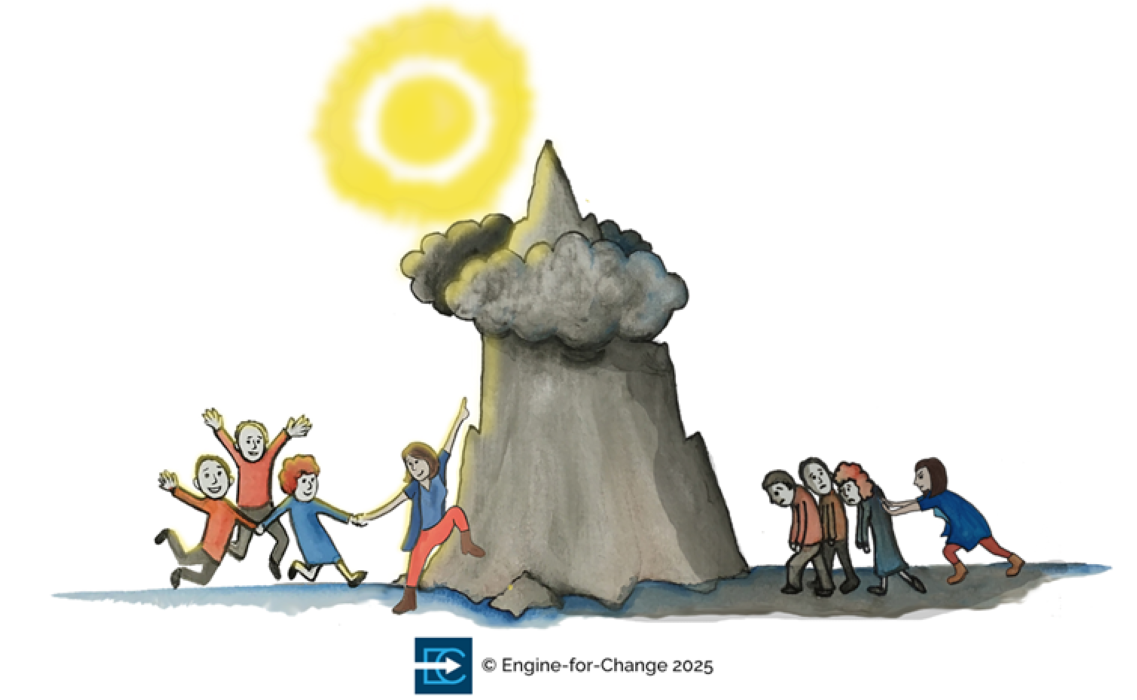Part 1 makes the case for building interpersonal chemistry as a change practitioner. In Part 2, we explore ways to deepen the interpersonal chemistry that is so important to successful change execution.
Building interpersonal chemistry means showing an interest in individual stakeholders and getting to know them a bit on a personal level – perhaps, how long they’ve been in their job, a little about their career history, a bit about their home lives, how many kids they have, their personal interests outside work, where they went on their last vacation, the name of their pet orangutan, and so on.
As long as your interest isn’t driven by a desire for titbits of gossip, or your attention doesn’t make you come across as a prying and intrusive busybody, you’ll find that people in general appreciate others showing an interest in them or making an effort to know them. It’s one of the verities of life, and somewhat part of being human. We all like to feel valued, treasured, acknowledged, esteemed or loved. We want to feel that we matter.
The need for attention and affection may be natural – we see it in so many places around us in nature. We see it in many animals where newborns instinctively seek out their mother’s presence, whether for warmth, protection, nourishment, comfort, or reassurance. We see it in human infants who get unsettled or agitated when they temporarily lose maternal contact but become less distressed or even tranquil when their mother returns. We see it in children in the garden or playground when they yell in delight, “Dad, Dad, look at me! Look what I can do!” We see it in our own adult behaviours at dinner parties and other events, where we gravitate towards people we know, almost on autopilot, or we warm to new faces who show an interest in us by smiling, talking or listening to us.
We humans are born with brains that are biologically hardwired to respond to positive strokes like care, kindness, interest, or the warm acknowledgement of others. It’s in our groove. And we’re more likely to hold positive sentiments of people who evoke the sweet vibes that such positive strokes typically bring. It’s just the way we roll, part of the fabric of life, recognisable in your own orientation towards those work colleagues and stakeholders who show you some love.
When you’re genuinely solicitous about your individual stakeholders, or interested in their stories, and you make a little effort to get to know them, you’re like an alchemist propagating the chemistry of positive interpersonal connections – connections propagated through the ages, helping to keep humanity sane; connections which in your own work context can only benefit you and your cause.
It can be time-consuming, and just isn’t possible with every individual stakeholder in every situation. But it’s an endeavour worth its weight in gold.
You’ll be astonished how a little bit of effort to create connections at an individual or personal level can spawn enormous improvements in stakeholder engagement and alignment; because connecting with individual stakeholders on a personal level fosters affinity. It also enables you to tailor your engagement in order to create concurrence in individuals’ consciousness, especially the content, language and packaging of your communication.
Even basic things like learning to say “Hello”, “Thank you” or “Goodbye” in a foreign stakeholder’s local language can make all the difference to the chemistry of your interactions and how attuned they are to your agenda.
But using clever packaging for your communication isn’t just about what you say. As with your colleagues and stakeholders, your own non-verbal communication or body language – such as your facial expressions, posture, gesticulations, and so on – accounts for well over fifty percent of your communication. How you say it can be as important as, if not more important than, what you say.
When we speak, things like our tone of voice, our pace of speaking, the intonations in our speech and the volume of our voice convey more than we may be aware of, and may transmit what we don’t intend to communicate – as may our overall body language. Yet it can be far worse or better when we don’t speak at all.
Knowing when and how to speak and when and how to be silent is a key aspect of maintaining the right attitude when communicating with stakeholders.
Silence, at the right moments, even if just a brief pause, is a potent communication device that can sometimes achieve more than words. It also helps us listen better and retain more of what is being transmitted to us – whether the transmitter is a stakeholder at work, a loved one at home or the sage within us. So our chances of capturing and benefitting from every morsel of the communication to us increases significantly.
As the experienced change alchemists will attest, change management is a complex affair.
And it can often be complicated too.
More often than not, the complexity and complications are less to do with the technical elements of organisations – like processes, facilities, equipment or technology – and more to do with the people: the senior executives, colleagues and stakeholders who are the fundamental creators or destroyers of change success. It’s always worth remembering that they’re human. And humans are not like computers or light switches that one can simply turn on and turn off – we’re not wholly rational nor behave in reasonable ways; we’re complex beings, with attitudes and inclinations that can sometimes be idiosyncratic, induced by a blend of personal, psychological and environmental influences.
These factors shape and condition the dynamics in our everyday interactions with others.
Accomplished change managers recognise and draw on this, infusing it into their alchemy of success.
And so should you.
Leveraging the power of human-to-human dynamics in your stakeholder management efforts will always yield favourable outcomes for your change initiatives or routine work tasks, and for your personal brand.
Adapted excerpt from Sweet Stakeholder Love: Powerful Insights and Tactics to Deal with Stakeholder Issues Better and Achieve More Success at Work by Sigi Osagie, published by EPG Solutions Limited © 2021. All rights reserved.







